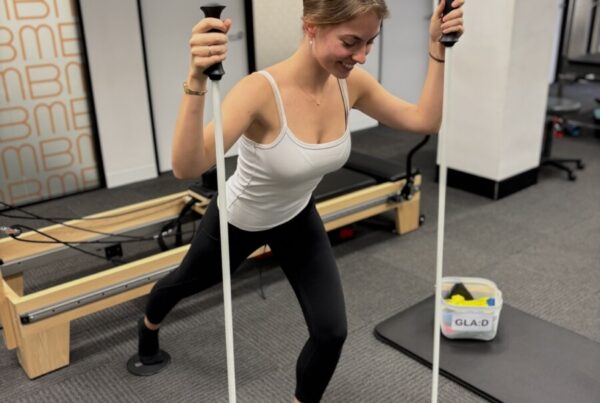In this blog I talk about exercise theory and running – your guide to the extras to help improve your running during Covid -19.
Running seems to be the exercise of choice for many during this lock-down period. Even with services starting to reopen, people are still pounding the pavement with their new-found love of running.
The age old easy jog has had something of a renaissance since lock-down measures closed gyms, pools and beaches. The benefits of running are vast, it is simple to do, accessible to most, benefits our general health and well-being, manages mental stress and keeps our waistlines from gaining an extra ‘19’.
When it comes to running there are many ways to train – intervals, tempo, and endurance among other styles. But what can we do outside of running that will give us a helping hand with our training program? Here is an update on strength training theory to augment your running.
Strength Training:
The common misconception with strength training for runners is that the best approach is high repetition and low load. However, there are many studies highlighting the benefits of heavy resistance, explosive resistance and plyometric training. A recent British Journal of Medicine article, updated in 2019, highlights the fact that middle and long distance runners have much to gain from a strength training program. These include improved ‘running economy’, or the efficiency of energy use. Strength training programs have also been attributed to faster time trial times and greater speed.
How should we apply strength training principles – what works best?
As we always argue there is no one size fits all with training programs, the specifics are multi-factorial. Strength is no different. Recent research suggests strength training should be ongoing and loosely follow the following principles.
- 6-20 weeks of strength training
- 2-3 sessions per week
- Loads of 60-80% of 1 rep max is advised
- 3-6 sets of 5-15 repetitions
- Exercise examples include squats with a barbell, dead-lifts, step-ups, lunges, calf raises.
- Allow enough recovery time between gym and running training, it is advised at least 3 hours of rest at a minimum.
More research is needed on the effects of strength training for injury prevention, there are many studies that highlight the preventative effects with overuse injuries. The theory goes that strength training induces physiological tissue changes adding tissue capacity thus reducing injury risk.
Furthermore, common misconception of resistance training being high repetition and low load are incorrect. You gain this element from running. It’s the addition of the things you do not train through running that rounds out the training program.
If you would like to learn more this winter running season book in at one of our four convenient city locations in Sydney’s CBD, or arrange a Bend + Mend telehealth consultation.





